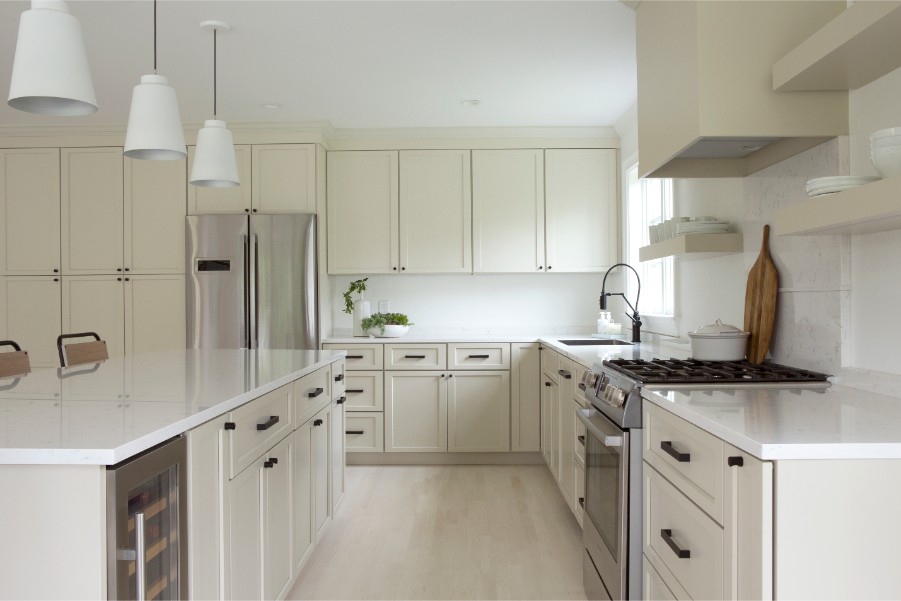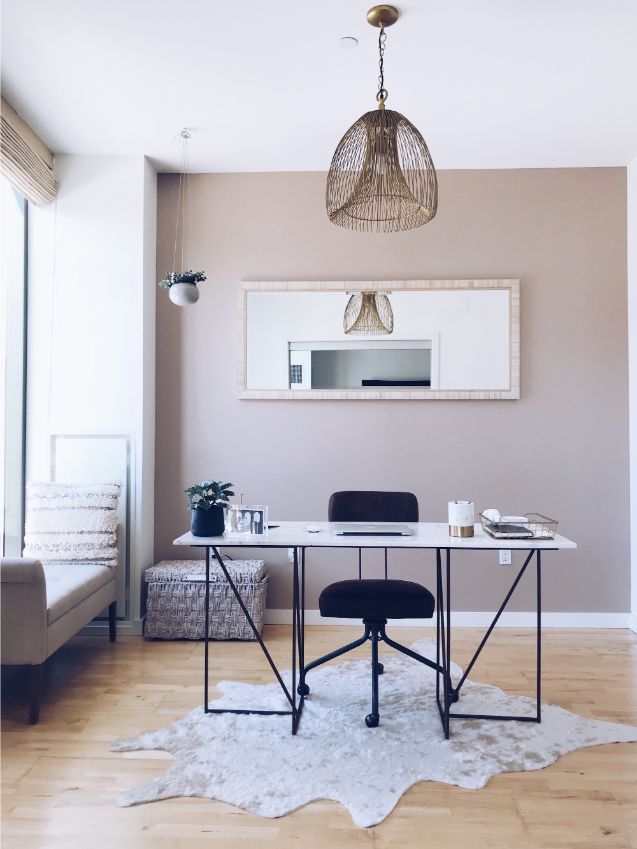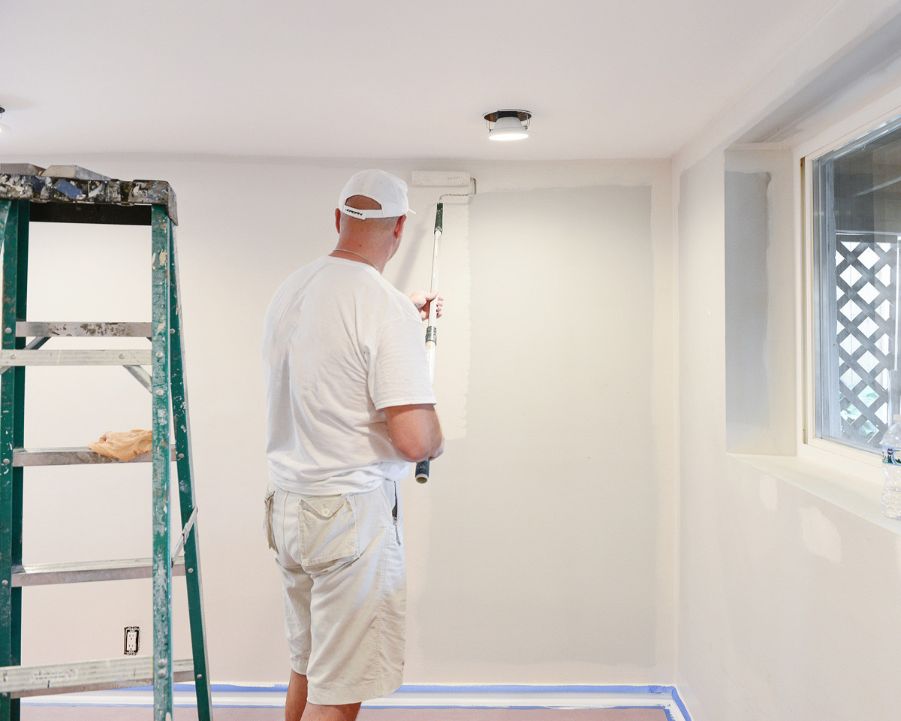How Much Does it Cost to Paint Kitchen Cabinets?

Painting your kitchen cabinets can completely transform your kitchen without committing to a complete renovation and design overhaul. However, painting the cabinets still requires an investment in cost, labor and time. If you’re looking to paint your kitchen cabinets, it’s worth assessing if you should DIY or hire a contractor. Read on for everything you need to know about painting kitchen cabinets
Cost to Paint Kitchen Cabinets
The cost to paint cabinets can range, depending on where you live, the size of your kitchen, the cabinet layout, paint quality and the professional you hire.
Whether you choose to DIY or to hire a contractor will impact the overall cost. DIYing costs include prep materials, painting supplies and paint. Hiring a contractor involves the same cost of materials, as well as paying for a professional’s time and expertise. However, hiring a professional will also ensure a flawless paint application.
Painting the Cabinets Yourself, is it Worth it?
When painting your kitchen cabinets, it’s essential to look past a fresh aesthetic. There are numerous factors to complete the job, also factoring in how long your kitchen won’t be available for use. A series of steps go into painting kitchen cabinets. This level of involvement can make hiring a painting contractor a wise choice.
If you decide that DIY is the best option for you the following steps are necessary to ensure a flawless application and ensure the paint will last long.
- Prep the cabinets and remove the doors and drawers. This will ensure an even paint application and help cover all the nooks and crannies. Remember to remove the hardware, tape the necessary surfaces, and cover any surfaces you don’t plan to paint.
- Clean all surfaces. Degreasing the cabinets and cleaning off any dirt, food and debris is necessary for a smooth paint application.
- Sand* and repair damages. Before painting, fill in any grooves or divots, so the paint adheres smoothly. It’s important to fill the damage, then sand*, so the surface is smooth.
- Priming the cabinets will ensure the paint adheres to the surface and will help improve the paint’s longevity and durability.
- Once the cabinets are prepped and primed, they are ready to paint.

Factors that Determine Cabinet Painting Pricing
Several different factors can significantly impact the cost of repainting your cabinets. These factors include:
- The size of your kitchen. A chef’s kitchen will likely cost more than a galley-style kitchen.
- The style of your cabinets. For example, a Craftsman-style cabinet has more intricate detailing than a Shaker-style cabinet.
- The condition of the cabinet. A well-maintained cabinet will require less prep work than an older cabinet that did not wear well over the years.
Should I Get a Painting Expert Involved?
Choosing the correct paint, such as a PPG paint, for the job is vital; the wrong choice can be more expensive long-term. No matter the paint, proper prep work and application by a cabinet painting professional will ensure that the paint job lasts to its fullest potential.
A professional painter, like a Paintzen professional painter, will come equipped with high-quality PPG materials, the best equipment and expert know-how on how to get the job done right. You can eliminate the stress of a DIY cabinet project by hiring a professional interior painter who will provide results in a quick time frame.
If you are interested in having your cabinets redone, get a free and instant quote today or get in touch with us, and our professional painters will be ready to paint your cabinets in less than a week.
*WARNING! If you scrape, sand, or remove old paint, you may release lead dust or fumes. Lead is toxic. Exposure to lead dust or fumes can cause serious illness, such as brain damage, especially in children. Pregnant women should also avoid exposure. Wear a properly fitted NIOSH-approved respirator and prevent skin contact to control lead exposure. Clean up carefully with a HEPA vacuum and a wet mop. Before you start, find out how to protect yourself and your family by contacting the USEPA National Lead Information Hotline at 1-800-424-LEAD or log on to http://www.epa.gov/lead.



